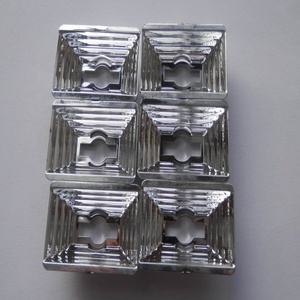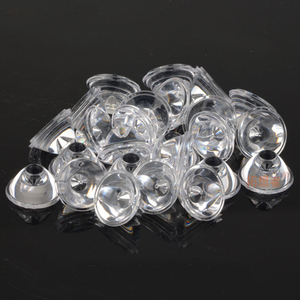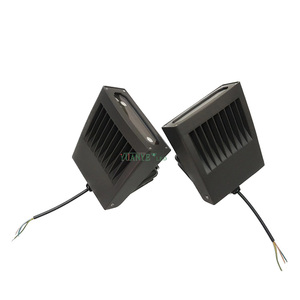(864 products available)



























































































































































































































LED reflector lights are devices that use light-emitting diodes (LEDs) to produce light for various applications. They are known for their energy efficiency, long lifespan, and versatility. An LED reflector is a light source that directs light emitted from an LED chip, focusing it into a beam for specific applications. The reflector is usually made from aluminum or plastic, which is shaped to direct light forward. The LED chip and reflector are encased in a housing that also includes other components required to power the LED. An LED reflector light is used in recessed lighting, spotlights, taillights, and many other applications requiring focused light. The term 3W refers to the power consumption of the LED light. A 3W LED light is considered to have low power consumption. Here are some of the types of LED reflector 3W:
According to the direction of the light, LED reflectors are divided into:
LED reflectors can also be classified based on the number of LEDs in the light.
LED reflectors can also be classified based on their application.
LED reflectors are lighting devices that use light-emitting diodes (LEDs) to generate illumination. They consist of a light source (the LEDs), an electrical circuit to power them, and a reflective surface that directs the light. LED reflectors are known for their energy efficiency, long lifespan, and ability to focus and direct light effectively. Here are some of their key features and functions:
Energy Efficiency
LED reflectors are more energy-efficient than traditional incandescent or halogen reflectors. They convert a higher percentage of electrical energy into light, resulting in lower energy consumption and reduced electricity bills.
Long Lifespan
LED reflectors have a long operational life. Depending on the type and brand, they can last anywhere from 25,000 to 50,000 hours or more. This means that the reflectors will not need to be replaced as often as traditional reflectors. As a result, LED reflectors reduce maintenance costs and provide long-term savings.
High Brightness
LED reflectors are designed to provide high brightness. They are suitable for applications requiring intense illumination, such as spotlights and floodlights. Additionally, many LED reflectors have a high luminous efficacy rating, meaning they produce more lumens per watt.
Directional Lighting
LEDs are inherently directional light sources, meaning they emit light in a specific direction without the need for a reflector. This property makes them more efficient than non-directional sources because less light is wasted in unwanted directions. However, when designed with reflectors, they can still be used to focus and direct light effectively in applications where a wider beam angle is required.
Minimal UV Emissions
LED reflectors emit very low ultraviolet (UV) radiation compared to traditional reflectors. This makes them safer for use in areas where UV exposure needs to be minimized, such as near sensitive materials and in outdoor lighting applications.
Color Options
LED reflectors are available in different color temperatures and options. This allows users to choose the desired ambiance, from warm to cool white light. Some LED reflectors also offer RGB color options for decorative lighting purposes.
Dimming Capability
Many modern LED reflectors come with dimming capabilities. This allows users to adjust the brightness level according to their needs and preferences. Dimming LED reflectors can also enhance energy efficiency by reducing power consumption when full brightness is not required.
3W LED reflectors are versatile lighting solutions used in various applications. Here are some common usage scenarios:
Residential Lighting
Living Rooms: 3W LED reflectors can be used in ceiling lights or recessed lighting fixtures to provide ambient lighting in living rooms.
Kitchens: They are useful for task lighting in kitchens, illuminating countertops, and stovetops.
Bathrooms: These reflectors provide bright, energy-efficient lighting for bathrooms.
Commercial Lighting
Offices: 3W LED reflectors are used in office spaces to provide general lighting. They help reduce eye strain and improve visibility.
Retail Stores: These reflectors are used in track lighting and spotlights to accentuate merchandise and create appealing displays.
Hospitality: In hotels, restaurants, and cafes, 3W LED reflectors are used for ambient lighting in dining areas, lobbies, and guest rooms.
Outdoor Lighting
Landscape Lighting: LED reflectors are used to illuminate trees, shrubs, and architectural features in outdoor spaces.
Parking Lots: They are useful for lighting in parking lots and garages, providing safety and visibility for pedestrians and vehicles.
Industrial Lighting
Warehouses: 3W LED reflectors are used in warehouses and industrial facilities for high-ceilinged areas. They provide bright, uniform lighting.
Manufacturing Plants: These reflectors are used in manufacturing plants and production facilities to illuminate workspaces and machinery.
Specialized Lighting
Healthcare Facilities: In hospitals and clinics, LED reflectors are used for bright, sterile lighting in examination rooms and hallways.
Educational Institutions: These reflectors are used in classrooms, libraries, and hallways in schools, colleges, and universities.
Accent and Decorative Lighting
Art Galleries and Museums: 3W LED reflectors are used in track lighting systems to highlight artworks and exhibits without damaging them.
Home Decor: These reflectors can be used in wall sconces, pendant lights, and chandeliers to create a cozy and inviting atmosphere in residential settings.
When purchasing an LED 3W light for wholesale, consider the following factors to ensure the customers' needs are met.
Beam Angle
Different types of reflectors produce varying beam angles. A narrow beam of 15-30 degrees is suitable for highlighting specific areas. A medium beam of 30-60 degrees is for general lighting. A wide beam of over 60 degrees is for illumination of large areas.
Type of Reflector
There are two types of reflectors. The aluminum reflector is lightweight and has good thermal conductivity. The PC is lightweight and can be molded into different shapes.
Color Rendering Index
The CRI indicates how well the light source brings out the colors. Select an LED light with a CRI of over 80 for accurate color rendering.
Heat Dissipation
LEDs emit less heat than traditional bulbs. But it is important to manage the heat for efficiency. Choose an LED with a good thermal management system like a heatsink.
Wattage
The LED light is 3W. Therefore, it has a low wattage. Consider the fixture it will be used with to avoid exceeding the maximum wattage.
Quality and Brand Reputation
Consider an established brand with a good reputation. It shows the product is of high quality and will last longer.
Dimmability
Some reflectors support dimming. It allows the user to adjust the brightness to suit different needs. Choose a dimmable LED if the customer wants this feature.
Driver Compatibility
The LED driver controls its performance. Ensure the driver is compatible with the reflector to avoid efficiency issues.
Q1: Do LED reflectors get hot?
A1: Unlike traditional lighting, LED reflectors do not get hot. The LEDs only get slightly warm but not enough to cause burns. The LEDs are safe to touch.
Q2: How does an LED reflector work?
A2: An LED reflector directs and concentrates light in a specific direction. The reflector uses the principles of light rays and angles to focus light efficiently.
Q3: What are the types of LED reflectors?
A3: There are two types of LED reflectors. They include; internal and external LED reflectors. Internal reflectors are placed inside the LED chip, while external reflectors are mounted outside the LED light.
Q4: What are LED floodlight reflectors?
A4: LED floodlight reflectors are lighting components that direct and spread light emitted by the LED chip. They concentrate the light beam and enhance brightness by minimizing light loss. The reflectors are commonly made of aluminum or plastic.
Q5: What is the difference between a LED light and a reflector light?
A5: Unlike LED lights, reflector lights use a filament. Also, reflector lights are less durable and energy-efficient than LED lights.